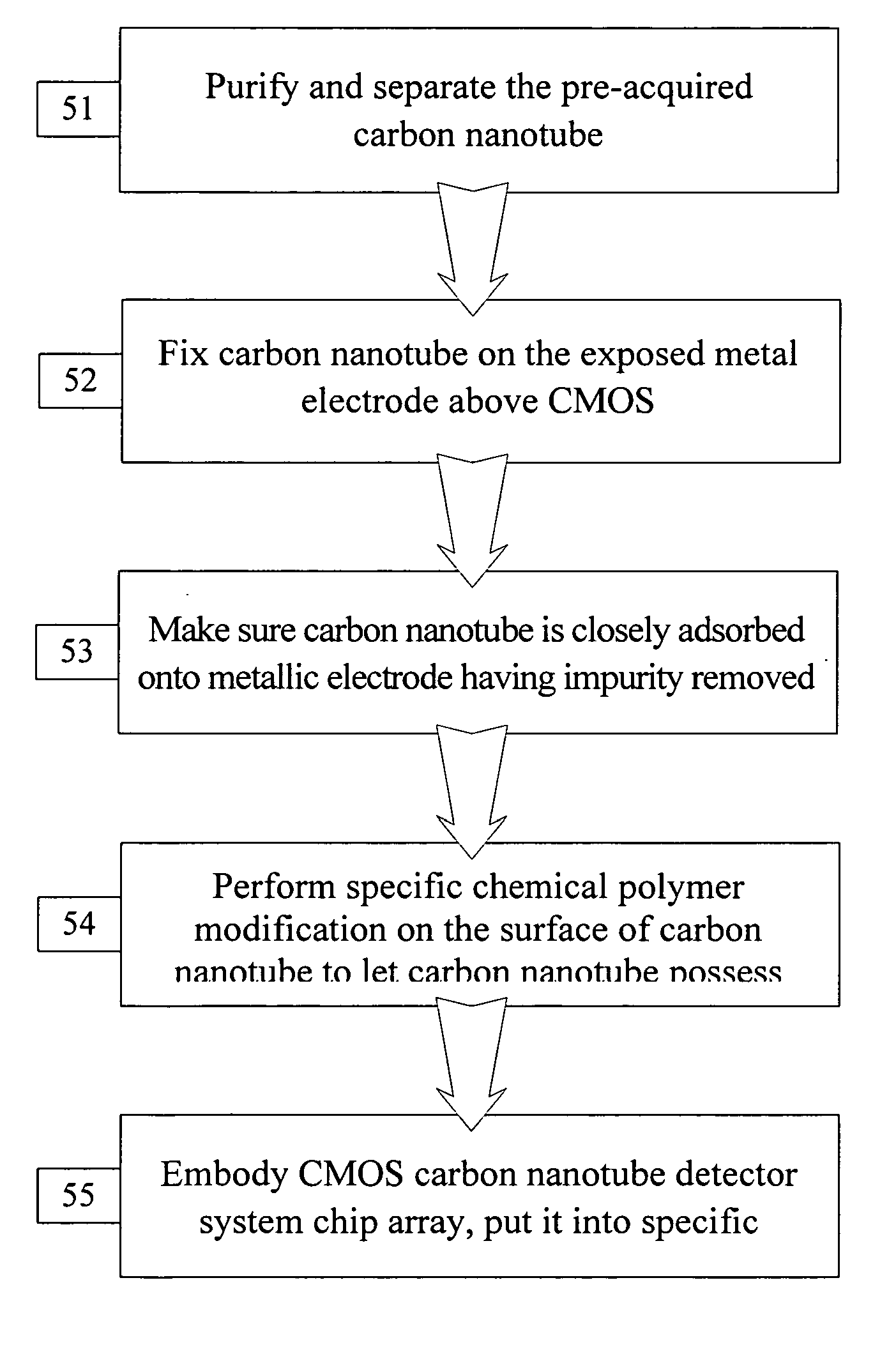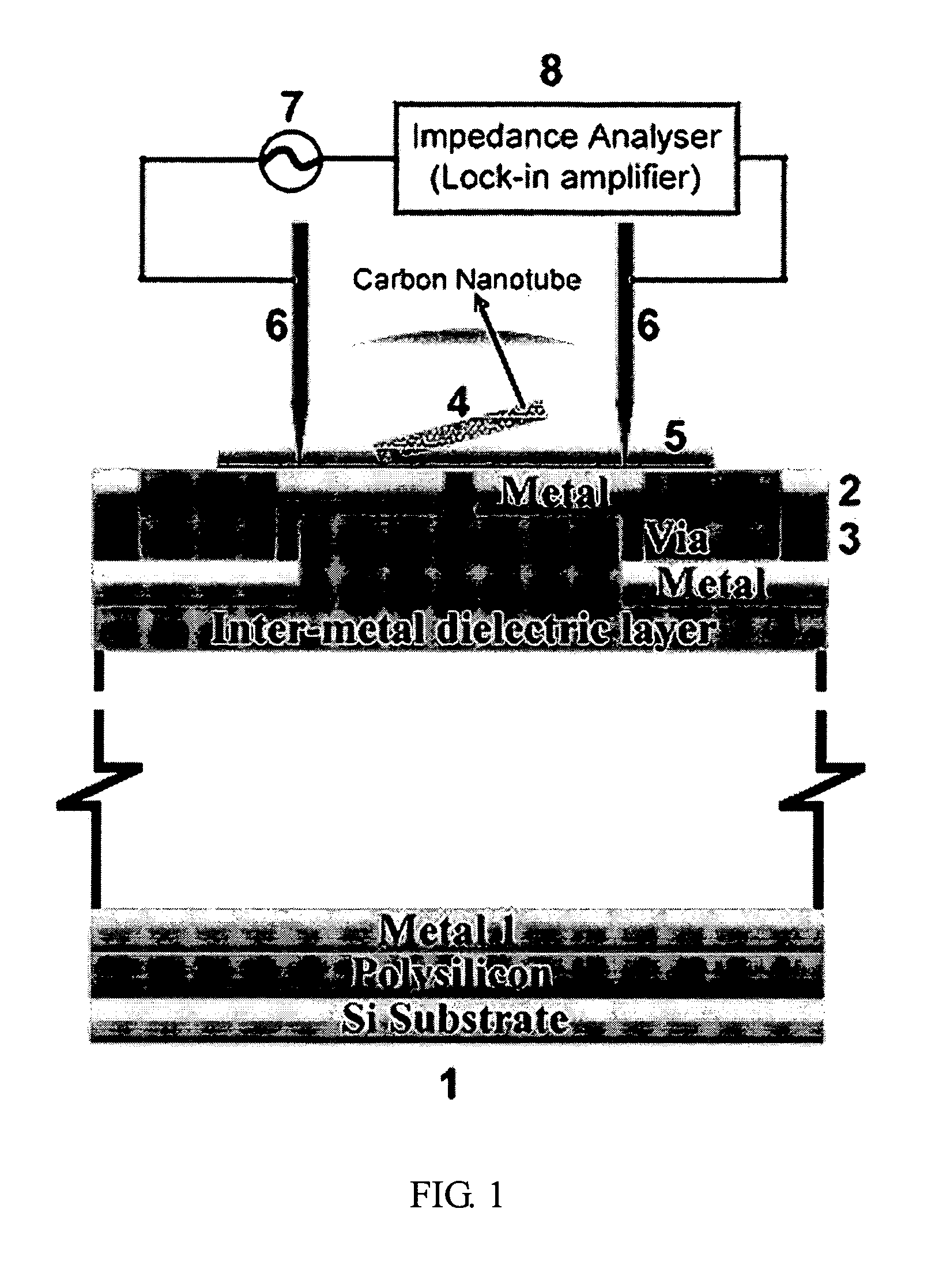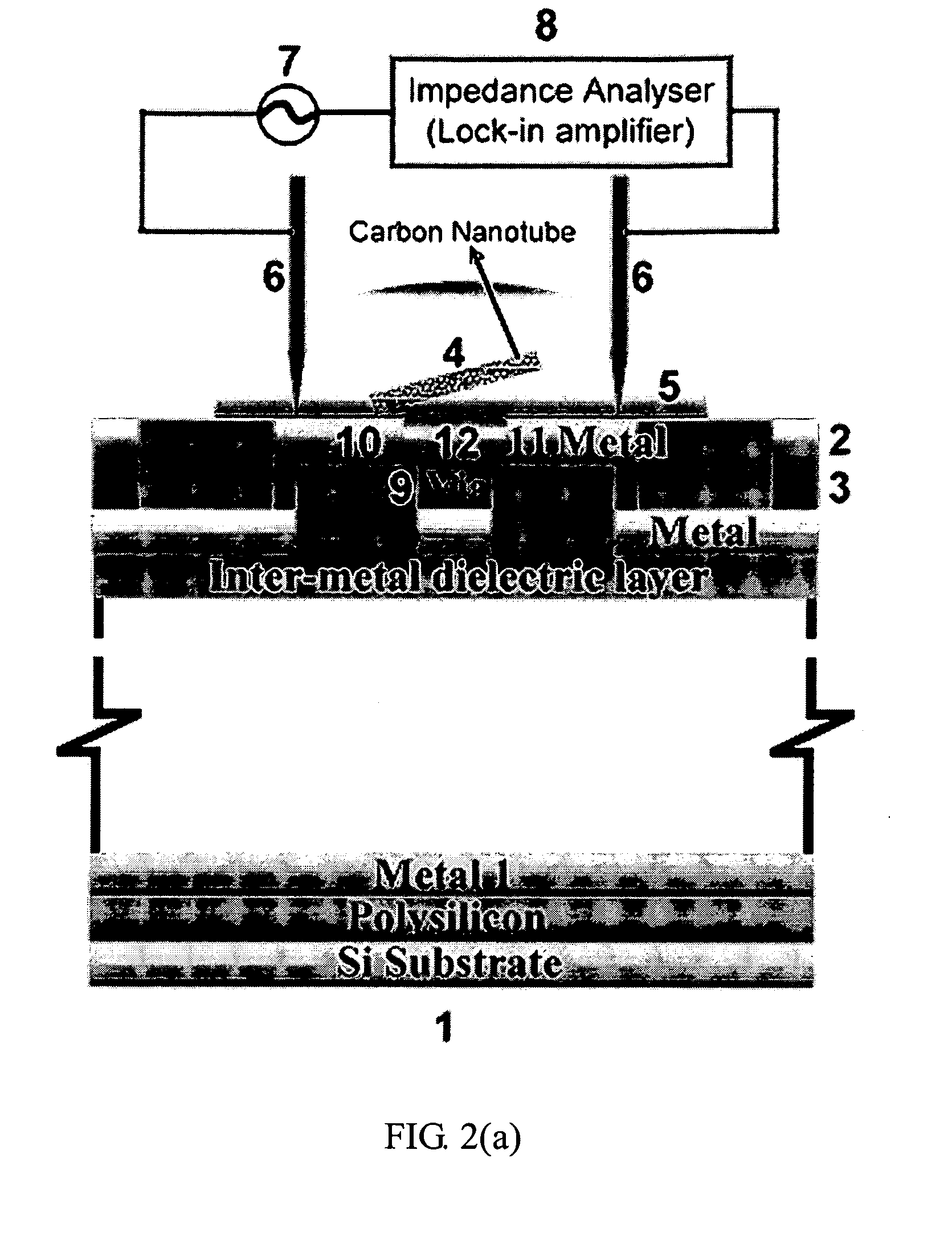Method for integrating carbon nanotube with CMOS chip into array-type microsensor
a technology of cmos and carbon nanotube, which is applied in the direction of nanotechnology, electrical equipment, and semiconductor devices, can solve the problems of inability to integrate and prepare carbon nanotube electronic devices into a chip unit possessing, and the cmos structure using metallic interconnection cannot keep complete structure and characteristics after high temperature cvd growth, so as to facilitate later manipulation of carbon nanotube, reduce detection time, and alleviate noise and signal loss
- Summary
- Abstract
- Description
- Claims
- Application Information
AI Technical Summary
Benefits of technology
Problems solved by technology
Method used
Image
Examples
embodiment 1
[0058] The carbon nanotubes used in the current embodiment have a diameter of about 2 nm, most of them are of single-walled semiconductor type. Through the use of vertical type probe card, not only DEP force can be applied, but also the quantity of carbon nanotube above the electrode can be obtained through the measurement of impedance value, therefore, carbon nanotube quantity can be precisely controlled and the assembly between carbon nanotube and CMOS device can reach wafer level. In embodiment 1, CMOS system chip combined with carbon nanotube is designed as “impedance type measurement system chip”, there is no control of back gate electrode, the tiny signal change generated on the carbon nanotube when its surface is in contact with foreign molecules is measured directly by the measurement circuit designed internally in the CMOS device. This impedance type is more suitable for the application of gas sensing because gas molecules are of large quantity. Because there is no back gat...
embodiment 2
[0059] The carbon nanotubes used in the present invention have diameter of about 2 nm, most of them are single-walled semiconductor type. Through the use of vertical type probe card, not only DEP force can be applied, but also the quantity of carbon nanotube above the electrode can be obtained through the measurement of impedance value, therefore, carbon nanotube quantity can be precisely controlled and the assembly between carbon nanotube and CMOS device can reach wafer level. In embodiment 2, CMOS system chip combined with carbon nanotube can be designed as “transistor type measurement system chip”, the via metal beneath metal layer is used as back gate electrode, and through the use of post process, the passivation above via is removed to form a dent, then put a few drops test solution containing biological molecules, based on the concept of the formation of Liquid-Gate by the solution, to control the carrier in the channel of carbon nanotube. In the design of transistor type mea...
PUM
 Login to View More
Login to View More Abstract
Description
Claims
Application Information
 Login to View More
Login to View More - R&D
- Intellectual Property
- Life Sciences
- Materials
- Tech Scout
- Unparalleled Data Quality
- Higher Quality Content
- 60% Fewer Hallucinations
Browse by: Latest US Patents, China's latest patents, Technical Efficacy Thesaurus, Application Domain, Technology Topic, Popular Technical Reports.
© 2025 PatSnap. All rights reserved.Legal|Privacy policy|Modern Slavery Act Transparency Statement|Sitemap|About US| Contact US: help@patsnap.com



